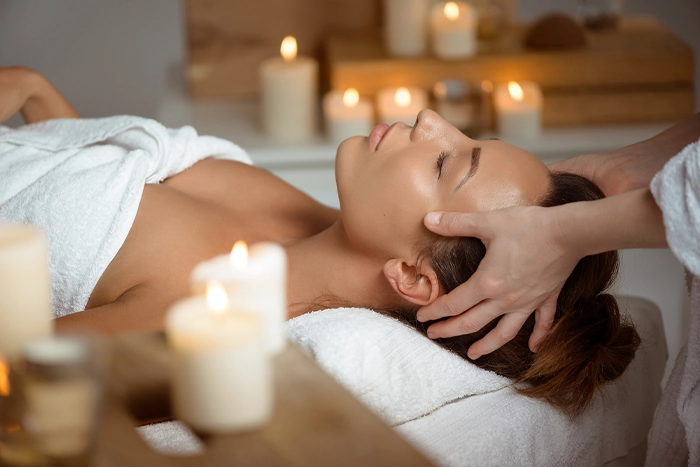

Massage Spa Marketing Attract More Clients
Running a massage spa requires a perfect balance of client care, team management, and operational excellence. But even the most skilled therapists and serene environments won’t drive growth without visibility. If your community doesn’t know you exist — or why your services matter — you’ll struggle to stay consistently booked.
That’s where massage spa marketing comes in.
With the right strategy, you can connect with your ideal clients, communicate the value of your services, and create a reputation that brings people back time and time again. In this post, we’ll walk through effective marketing tactics tailored specifically for massage spas — and how you can implement them to grow your business with confidence.
Understand What Sets Your Spa Apart
Before promoting your services, clarify what makes your massage spa unique. Are you focused on clinical and therapeutic massage? Luxury relaxation treatments? Sports and injury recovery? Do you serve a particular demographic such as athletes, busy professionals, or wellness-conscious women?
A well-defined brand helps shape your messaging, pricing, and marketing channels. When you clearly communicate your strengths, clients are more likely to choose your spa over a generic alternative.
Your branding should also be reflected consistently in your logo, website, service descriptions, social media content, and tone of voice.
Optimize for Local Visibility
Most people searching for massage services are looking for something nearby — often within a few miles of home or work. To reach these high-intent clients, your digital presence must be optimized for local search.
Start with a complete and optimized Google Business Profile. Make sure your listing includes:
Accurate business name, address, and phone number
Clear service categories (e.g., deep tissue, prenatal, Swedish)
Photos of your spa, treatment rooms, and team
Client reviews and responses
Up-to-date hours and booking links
Next, apply local SEO strategies to your website. Include keywords like “massage therapy in [city]” or “relaxation massage near [neighborhood].” Create individual service pages that explain what each treatment offers and who it’s for. This helps Google understand your content and improves your visibility in local search results.
Create a Website That Builds Trust
Your website is often the first impression someone has of your massage spa. It should look professional, load quickly, and work seamlessly on mobile devices. Most importantly, it should answer the key questions your prospective clients have:
What types of massage do you offer?
What do treatments cost?
How do I book an appointment?
What makes your spa different?
Do you accept insurance or HSA/FSA cards?
Add testimonials, photos of your space, therapist bios, and any certifications or specializations you hold. The more trust you build online, the more likely people are to book.
Use Content to Educate and Attract
Many people don’t fully understand the benefits of massage therapy — or which type is right for them. Use blog posts, FAQs, and social media content to educate your audience and position your spa as a trusted expert.
Topics might include:
“5 Signs You Need a Deep Tissue Massage”
“Prenatal Massage: Benefits for Mom and Baby”
“Massage Therapy for Stress and Anxiety Relief”
“How Often Should You Get a Massage?”
Sharing helpful, relevant content is a cornerstone of massage spa marketing, because it builds authority, improves your search rankings, and gives potential clients a reason to choose you.
Promote with Paid Ads and Social Media
To jump-start growth or fill last-minute openings, use paid advertising to target new clients in your area. Google Ads can help you appear at the top of search results when people look for services like “sports massage near me” or “massage for back pain.” Social media ads on Instagram and Facebook allow you to reach people based on interests, behavior, and location.
Use attractive visuals of your spa, limited-time promotions, and clear calls to action like “Book Now” or “Claim Your First Visit Discount.”
Your organic social media presence also plays a big role. Share behind-the-scenes photos, introduce your staff, post client reviews (with permission), and educate your audience with short videos or tips.
Build Client Loyalty with Email and SMS
Great massage spa marketing doesn’t stop after the first appointment. Staying connected with clients through email and SMS helps increase rebooking and long-term loyalty.
You can send:
Appointment reminders
Monthly specials
Wellness tips
Birthday offers
Referral or loyalty rewards
Use automation tools to make this process seamless. A simple follow-up message after a session can lead to more consistent bookings and deeper relationships with your clients.
Track Results and Adjust as Needed
Marketing is an ongoing process, not a one-time project. Track the results of your campaigns, website traffic, ad performance, and client behavior using tools like Google Analytics, social media insights, and your booking system.
Look at:
Where your new clients are coming from
What pages or services are getting the most attention
Which ads or posts are converting best
When clients typically rebook (or don’t)
Use these insights to refine your strategy and invest in the efforts that deliver the greatest return.
Final Thoughts
The wellness industry continues to grow, and clients are actively seeking skilled, trustworthy massage therapists. But without a strong digital presence and a thoughtful marketing plan, even the best spas can go unnoticed.
That’s why investing in massage spa marketing is essential for long-term success. From local SEO and content creation to social media and retention strategies, the right approach can help you stand out, stay fully booked, and grow a loyal base of clients who value what you do.
At Salon Marketer, we specialize in custom marketing strategies for massage spas and wellness professionals. Book a free consultation today and discover how we can help you attract more of the right clients — and build a practice that grows with intention.



